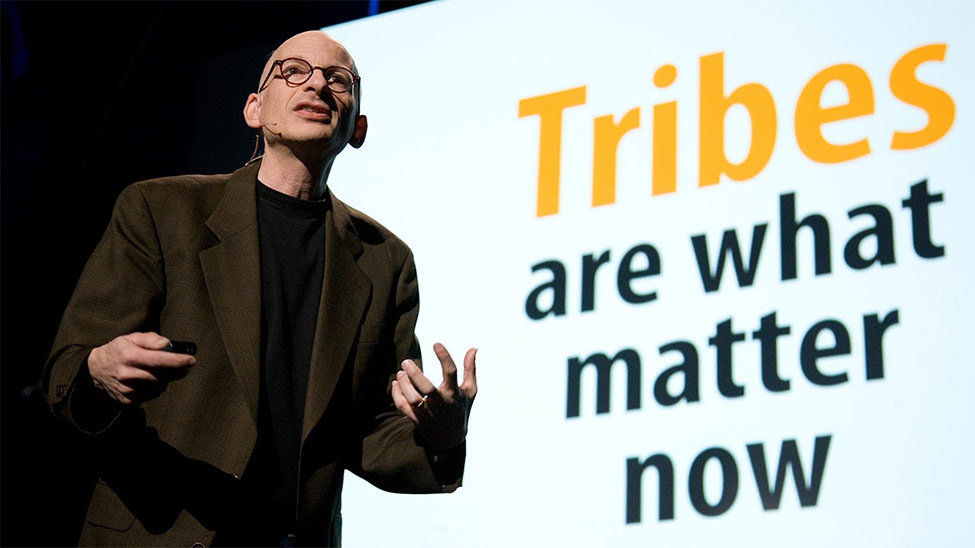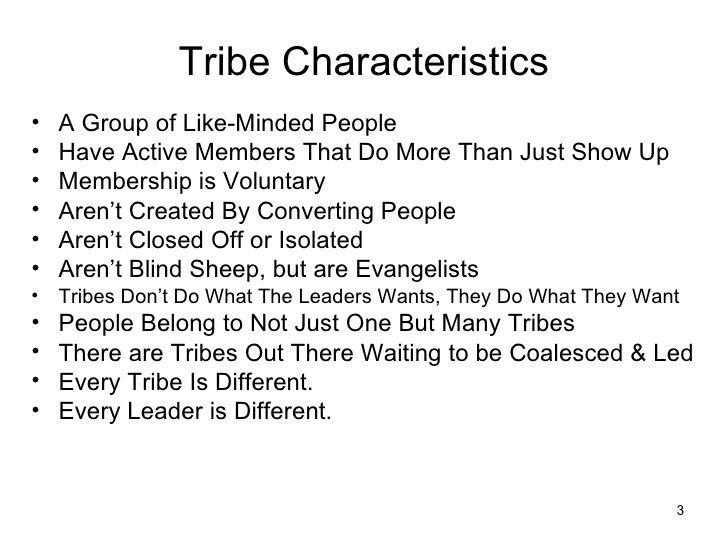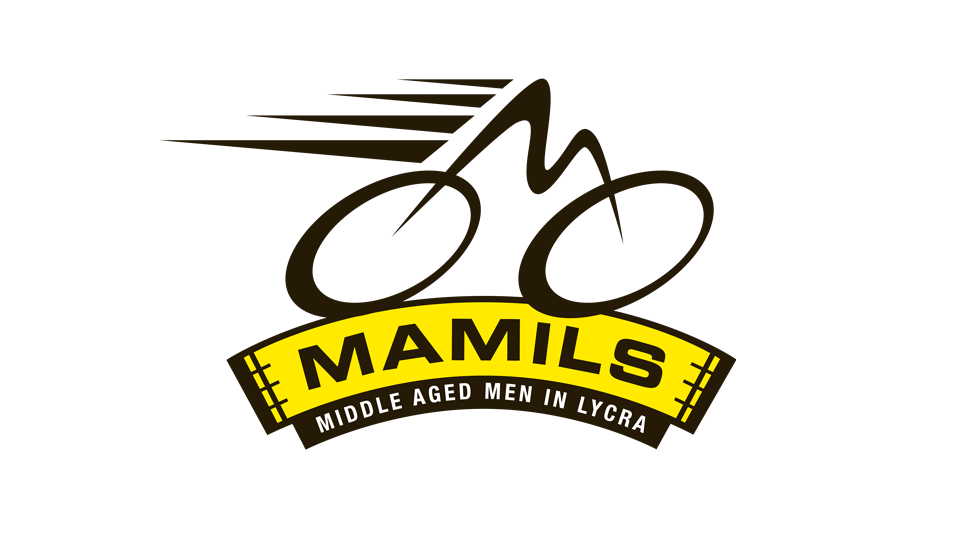As content creators we spend most of the time focused on niches, or sectors, when we should be creating content for tribes. I first read about the concept of Tribes in a book by Seth Godin. Since then I always make sure my content appeals to a specific and influential tribe, rather than targeted at a niche. There are lots of advantages to targeting tribes and at the very least, learning the technique can add another effective tool to the toolbox.
In many ways niche marketing is old school. The technique has been around for many a years and although some of it does still hold water it is getting a little ratty around the edges.
Previous to this I wrote an article about how to find influencers within a niche, but I want to show you how you can also use the concept of tribes to improve your ability to identify influencers and have more of a chance in persuading them to help you out. So instead of searching for the influencer within a niche, we need to find the tribes who are important, infiltrate them and identify the influencers within those tribes who have the influence to empower our published content and promote our brand.

Niche Marketing
Working in niches was great when the focus was on keywords, generating more web pages optimised with those keywords and then throwing a bunch of links at it. But things have changed a lot since that was all you needed to do.
Although not entirely gone, the focus now is more on people than on search engines. Which may be a good thing as it shakes things up a little. With Google increasing the heat on mechanised and programmed ways of boosting your rankings, it helps to take a more human based approach, rather than an algo busting approach.
In other words, we should be producing content for people, rather than the algorithm. But we don’t simply target everyone, we organise people into tribes, to enable our content to be presented to people who are most likely to respond to the message.
What is a Tribe?
A tribe is a group of people gathered around a common mindset, or a common set of goals. They are people travelling in the same direction at the same speed. Although they may be many, they act as a singular entity and can be described in the singular.
A tribe can have an outward appearance which draws initial attention, but it is the shared thinking that really sets them apart. They may have similar lifestyles, cultural experiences, net worth… etc. If we analyse a specific tribe it will give us a good example of how to recognise and how to communicate with tribes.

The rise of the MAMILS
The tribe of MAMILS (middle aged men in lycra) are quite easily spotted due to their expensive bikes, age, sex, and the fact that they are wearing lycra. These are men who in their mid-life crisis go for two wheels of the bicycle, rather than the traditional 4 wheels of the sports car. The tribe is defined by:
- Their expensive bikes which denotes disposable income
- Interest in health, slowing the aging and how they look physically
- They are not embarrassed by wearing skin tight, sometimes brightly coloured lycra
- They have the time to be able to ride their bikes
- Role models are provided in the form of Bradley Wiggins and Lance Armstrong (yes, he is still a role model to some)
- They are excited regarding discussion of bike tech, such as what material a bike is made out of and gearing systems
- Mapping out routes, creating lists of gear to take on long treks.
- Using social media to promote their MAMIL image and to make sure their followers know what they get up to

It is obvious if you are in the cycling niche you will already be aware of this tribe and possibly one yourself. It would make sense to market to this tribe with their disposable income active participation in social media.
Important to Segment
By segmenting the tribe, we are able to focus on aspects which may be a cross over, for example the MAMIL tribe would probably be interested in gadgets such as Fitbit and GoPro. If you are in the fitness or gadget space, this could be a useful cross over and you could create content specifically targeted at the MAMIL to ensure a more focused piece of content. The more a published piece of content is targeted at a specific group of people, such as those in the MAMIL tribe, the more likely that you will be rewarded by social mentions, links, and website. Further segmentation of this tribe would include:
- Fitness clothing
- Cycling holidays
- Sports injuries
- Cycle, travel and life insurance
- Credit, to purchase that new “Graphene” bike
- Male “issues”
Segmentation of a tribe is very useful as it gives us more focused content opportunities. Most segments will overlap with other tribes and it’s useful to pick out those who overlap with many tribes, thus increasing the potential of the content produced.
Overlap into your sector can also occur. If you sell sporting goods, sports fashion… etc. You would find it useful to create content that serves both your tribe and the tribe of the Mamil. Even so called boring industries such as insurance and credit can have an overlap. Each tribe has a potential to overlap with the subject you are working on.
When you segment a tribe, you are looking for opportunities for cross over content. By identifying tribes who have a natural overlap with your publishing goals, it gives you a ready make target market which you can publish to.
If you were niche marketing you would be focusing on the keywords which people would be searching for, rather than the people themselves. After you have found the keywords, you still have to find the people and most niche strategies have poor processes for identifying, communication and then influencing the tribe.
To be able to communicate and influence the tribe you must adopt a lot of the aspects which defines them as members. You must learn to talk their language and walk among them. You do this by reading what they read, listening to the same podcasts, watching the same Youtube clips. The old stalwart, web forums are a good jumping off place for a lot of this research as forums tend to be used by the hard core or the inner circle of the tribe.
With a web forum you can quickly tell which people have been around the most and represent experienced and influential voices.
There will be subjects that define the tribe, these may be contentious and are great debating points within the tribe. For example cyclists will have common strong views on safety on the public roads and opposing views, such as which type of gearing system is best. Choosing which tribes to target may be an art in itself, but if you collate a list of the most active tribes online, who have a good disposable income and who are fanatics. Then you can sift through them to spot overlapping areas.
For example, bathroom fittings and the middle aged cyclist. Not much overlap you would think. But bathroom fittings fall under the label of a ubiquitous product. Everyone uses a bathroom fitting at some point, plus they do specific things and it’s simply a way of working out the problems the middle aged cyclist can solve with bathroom fittings.
- How to find the best attachment to clean a muddy bike
- How much is a power shower that will massage my muscles after a long ride
- Can I get a heated towel rail that will dry my lycra shorts.
For such overlaps there are not going to be a massive amount of subjects to create content around, but there will always be some. Other ubiquitous areas that people find hard to create content around are:
- Insurance
- Accounting
- Plumbing
- Time management
And many others, the key to creating great content ideas in these subjects is not to simply think about the subject, but about the overlap with a tribe. Once you start focusing on a specific tribe the ideas will flow.
Let’s keep using the Mamil tribe, but any would work. It’s obvious what would interest the cycling tribe about insurance, but it also raises the aspect of road safety which is of huge interest to the cyclist. Also the issues around bike insurance and not getting your bike stolen in the first place. So an article about the “Ten best locks to use to stop your bike being stolen”, would be a perfect overlap for the subject of insurance and cycling. Of course you would make sure the insurance client would have a cycling insurance policy to sell on the back of such an article. On the subject of accounting, a large number of cyclists are either self employed or have some taxation need that requires an accountant, thus creating a useful overlap where content can be created. We look at the tribe and their needs and problems and create a number of content ideas.
- How I can write off my next bike purchase off against tax
- Should cyclists pay road tax
- If I cycle to work, can I claim expenses
Plumbing, we covered that with bathroom fittings and as plumbing is a wider subject it should be easier to find more overlapping subjects.
Time Management
A more interesting subject for a writer to create content around as we are always dealing with issues of time management, deadlines etc. But the cycling tribe, particularly the middle aged cycling tribe have some specific overlapping interests. As they are interested in pushing themselves to the limit and have a good interest in stats and timings, content can be created around:
- Top ten mobile apps to optimize bike routes
- How to stay motivated by using a set routine
- How to plan a two week mountain biking trip in the Andes
In conclusion
Use tribe marketing to find overlapping subjects with your own publishing or content marketing strategy. Run through a list of influential tribes finding overlapping areas. If your subject is ubiquitous you will find many. Becoming friends with a tribe also means that they have your back and will help with promotion issues.
Photos 1 2 3

 Site Explorer
Site Explorer Keyword tool
Keyword tool Google Algorithm Changes
Google Algorithm Changes

Hello Lyndon… very nice and informative article.
I just discovered your blog some time ago, and it has really great info and data on it.
Tribe is something that’s naturally coming when you put search engines out and people in equation. As the time goes by, niche sites will vanish just as minisites vanished. That won’t be relevant method anymore.
Thanks for taking time and explaining little bit better the “tribe marketing”. It helped a lot!
Sounds interesting Lyndon but still not very sure that I correctly understood it. Do these people whom we are calling a tribe are aware of the fact that they are actually a tribe?How do we identify and group them logically? Can you please give a real-life example?
Good Article. I was interested in learning whether people who are in a tribe, or in marketing outreach, that we have identified as a tribe….do they like to be addressed as belonging to a tribe? Is being part of a tribe something that they are aware of? Is it part of their conscious identity?